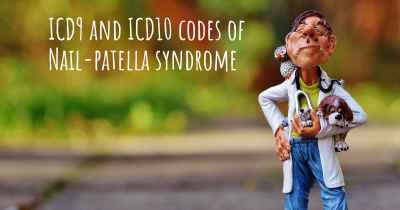How is Nail-patella syndrome diagnosed?
See how Nail-patella syndrome is diagnosed. Which specialists are essential to meet, what tests are needed and other useful information for the diagnosis of Nail-patella syndrome

Nail-patella syndrome, also known as hereditary onycho-osteodysplasia, is a rare genetic disorder that affects the development of nails, bones, and other tissues in the body. It is typically inherited in an autosomal dominant pattern, meaning that a person only needs to inherit the mutated gene from one parent to develop the condition.
Diagnosing nail-patella syndrome involves a combination of clinical evaluation, medical history assessment, and various diagnostic tests. The process is typically carried out by a healthcare professional, such as a geneticist or a specialist in musculoskeletal disorders.
Clinical Evaluation
The first step in diagnosing nail-patella syndrome is a thorough clinical evaluation. The healthcare professional will examine the individual's physical features and look for characteristic signs of the condition. These signs may include:
- Nail abnormalities: The presence of absent or underdeveloped nails, ridges, pitting, or splitting.
- Elbow abnormalities: Abnormalities in the shape or structure of the elbow joint, such as limited range of motion or dislocation.
- Knee abnormalities: Malformation or dislocation of the kneecap (patella), which may cause pain or instability.
- Eye abnormalities: Rarely, individuals with nail-patella syndrome may have eye abnormalities, such as glaucoma or cataracts.
- Other skeletal abnormalities: Skeletal abnormalities can affect various bones in the body, including the hip, spine, and pelvis.
If the healthcare professional suspects nail-patella syndrome based on the clinical evaluation, further diagnostic tests will be recommended to confirm the diagnosis.
Genetic Testing
Genetic testing plays a crucial role in diagnosing nail-patella syndrome. It involves analyzing a sample of the individual's DNA to identify mutations in the LMX1B gene, which is responsible for the condition. Genetic testing can be performed using various techniques, such as:
- Sanger sequencing: This method involves sequencing specific regions of the LMX1B gene to identify mutations.
- Next-generation sequencing (NGS): NGS allows for the simultaneous sequencing of multiple genes, including LMX1B, in a more efficient and cost-effective manner.
- Deletion/duplication analysis: This technique detects larger genetic alterations, such as deletions or duplications, within the LMX1B gene.
Genetic testing can confirm the presence of a mutation in the LMX1B gene, which is considered a definitive diagnosis of nail-patella syndrome. It can also help determine if the mutation was inherited from a parent or occurred spontaneously.
Imaging Studies
In addition to genetic testing, imaging studies may be performed to assess the skeletal abnormalities associated with nail-patella syndrome. These studies can provide detailed images of the bones and joints, helping to identify any structural abnormalities. Common imaging techniques used include:
- X-rays: X-rays can reveal abnormalities in the bones, such as malformation, dislocation, or degenerative changes.
- Magnetic resonance imaging (MRI): MRI uses powerful magnets and radio waves to create detailed images of the body's structures. It can help visualize soft tissues, cartilage, and ligaments.
- Ultrasound: Ultrasound may be used to assess the kidneys, as individuals with nail-patella syndrome can have kidney abnormalities.
These imaging studies can aid in the diagnosis of nail-patella syndrome and provide valuable information for treatment planning.
Other Evaluations
Depending on the individual's symptoms and suspected complications, additional evaluations may be recommended. These may include:
- Kidney function tests: Blood and urine tests can assess kidney function and detect any abnormalities.
- Eye examination: An ophthalmologist may perform a comprehensive eye examination to evaluate for any eye abnormalities.
- Renal ultrasound: This imaging test can provide detailed images of the kidneys and help identify any structural abnormalities.
- Electromyography (EMG): EMG measures the electrical activity of muscles and can be used to assess muscle function and detect any abnormalities.
These additional evaluations help in understanding the extent of the condition and identifying any associated complications.
Conclusion
In summary, diagnosing nail-patella syndrome involves a combination of clinical evaluation, genetic testing, imaging studies, and other evaluations. The clinical evaluation focuses on identifying characteristic signs of the condition, such as nail and skeletal abnormalities. Genetic testing is crucial for confirming the diagnosis by identifying mutations in the LMX1B gene. Imaging studies, such as X-rays and MRI, help visualize skeletal abnormalities, while other evaluations assess kidney function, eye abnormalities, and muscle function. The comprehensive diagnostic process allows healthcare professionals to accurately diagnose nail-patella syndrome and provide appropriate management and support for individuals with the condition.
Posted Mar 4, 2017 by Charlielottie 1175
Posted Feb 12, 2018 by Alan 1100
Posted Apr 15, 2018 by Amanda 800








